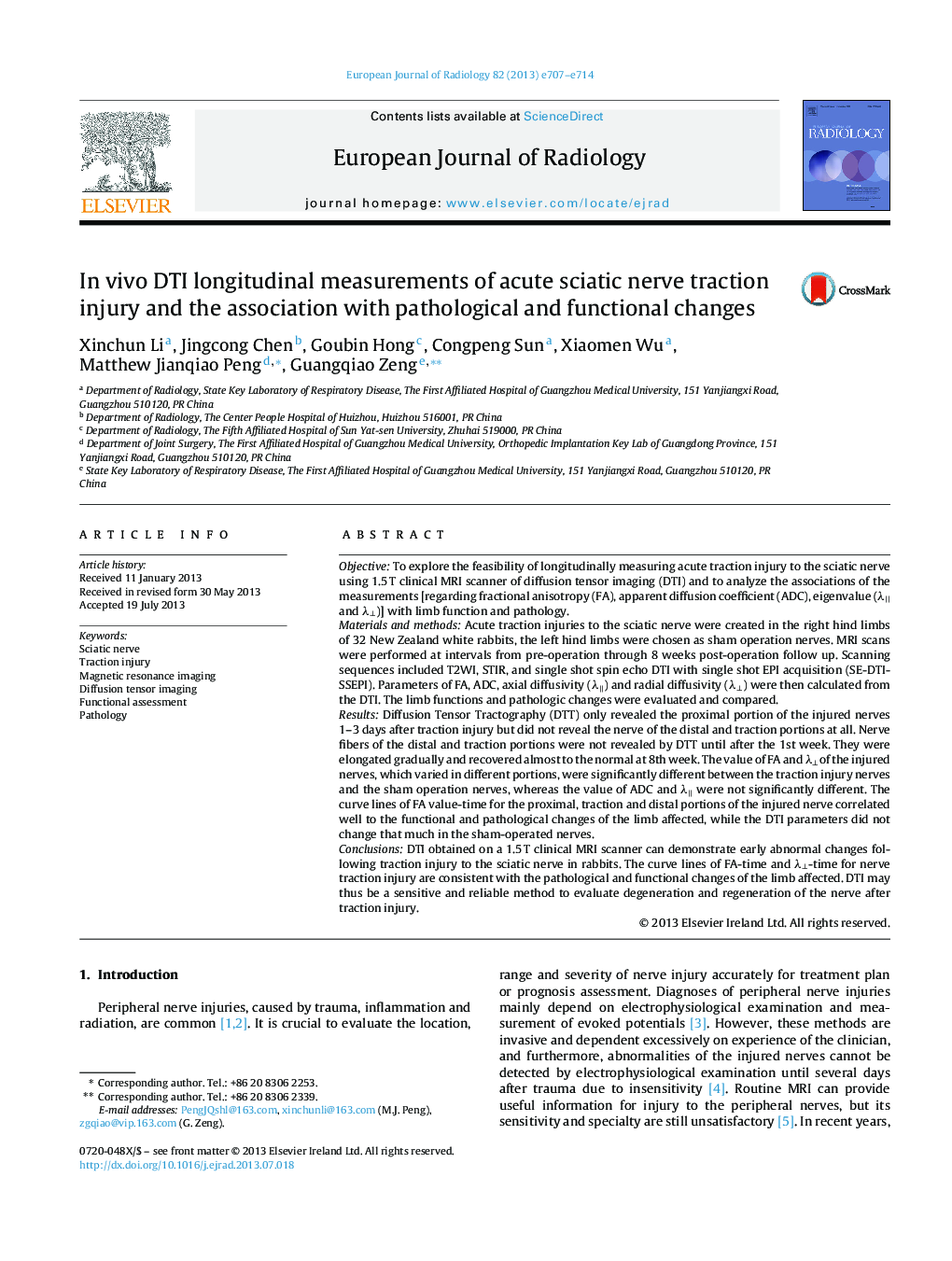| Article ID | Journal | Published Year | Pages | File Type |
|---|---|---|---|---|
| 4225661 | European Journal of Radiology | 2013 | 8 Pages |
ObjectiveTo explore the feasibility of longitudinally measuring acute traction injury to the sciatic nerve using 1.5 T clinical MRI scanner of diffusion tensor imaging (DTI) and to analyze the associations of the measurements [regarding fractional anisotropy (FA), apparent diffusion coefficient (ADC), eigenvalue (λ|| and λ⊥)] with limb function and pathology.Materials and methodsAcute traction injuries to the sciatic nerve were created in the right hind limbs of 32 New Zealand white rabbits, the left hind limbs were chosen as sham operation nerves. MRI scans were performed at intervals from pre-operation through 8 weeks post-operation follow up. Scanning sequences included T2WI, STIR, and single shot spin echo DTI with single shot EPI acquisition (SE-DTI-SSEPI). Parameters of FA, ADC, axial diffusivity (λ||) and radial diffusivity (λ⊥) were then calculated from the DTI. The limb functions and pathologic changes were evaluated and compared.ResultsDiffusion Tensor Tractography (DTT) only revealed the proximal portion of the injured nerves 1–3 days after traction injury but did not reveal the nerve of the distal and traction portions at all. Nerve fibers of the distal and traction portions were not revealed by DTT until after the 1st week. They were elongated gradually and recovered almost to the normal at 8th week. The value of FA and λ⊥of the injured nerves, which varied in different portions, were significantly different between the traction injury nerves and the sham operation nerves, whereas the value of ADC and λ|| were not significantly different. The curve lines of FA value-time for the proximal, traction and distal portions of the injured nerve correlated well to the functional and pathological changes of the limb affected, while the DTI parameters did not change that much in the sham-operated nerves.ConclusionsDTI obtained on a 1.5 T clinical MRI scanner can demonstrate early abnormal changes following traction injury to the sciatic nerve in rabbits. The curve lines of FA-time and λ⊥-time for nerve traction injury are consistent with the pathological and functional changes of the limb affected. DTI may thus be a sensitive and reliable method to evaluate degeneration and regeneration of the nerve after traction injury.
